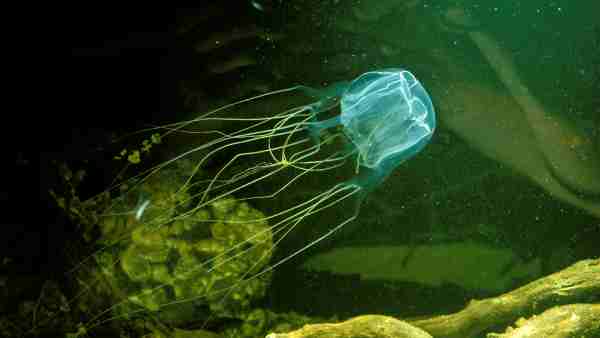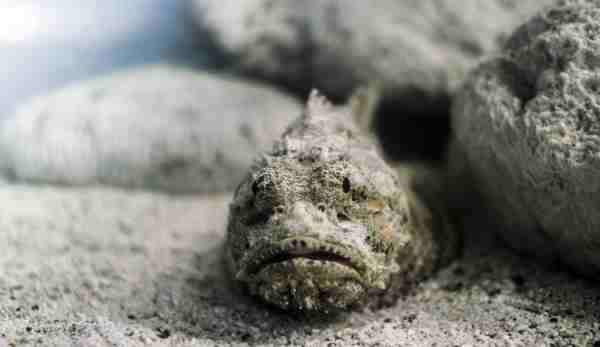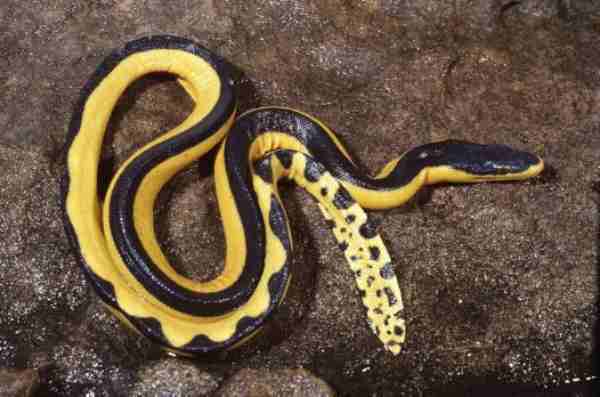Samoa, a lush and tropical paradise in the South Pacific, offers breathtaking landscapes, vibrant cultures, and an abundance of wildlife. However, within this idyllic setting, a lesser-known aspect of Samoa’s beauty lies in its dangerous wildlife. The islands are home to an array of fascinating yet potentially perilous creatures, from stealthy predators to venomous inhabitants. In this article, we delve into the intriguing realm of Dangerous Animals In Samoa.
Exploring their habitats, characteristics, and potential threats they pose, we seek to shed light on the coexistence between humans and these creatures. Understanding the dangers that lurk in this tropical paradise is crucial for visitors and residents alike, ensuring safety and fostering a deeper appreciation for the Dangerous Animals In Samoa. Join us as we unravel the mysteries of Samoa’s dangerous fauna and celebrate the awe-inspiring biodiversity that shares this island nation with us.
Table of Contents
Geography and Ecosystem of Samoa:
Samoa, an archipelago in the South Pacific, boasts a captivating geography that ranges from volcanic mountain ranges to lush rainforests and pristine beaches. The islands are characterized by their diverse ecosystems, including tropical rainforests, coastal mangroves, and coral reefs. These ecosystems harbor a rich variety of wildlife, both on land and in the surrounding seas.
From elusive terrestrial creatures to marine life like sharks and jellyfish, Samoa’s geography nurtures a wide array of fauna. However, amidst the natural beauty lies potential danger, as some of these animals possess traits or behaviors that can pose risks to human safety.
Overview of Dangerous Animals In Samoa
1. Box Jellyfish:

Box jellyfish are a significant concern in Samoa’s coastal waters, particularly during the warmer months. Their tentacles contain thousands of stinging cells, releasing venom upon contact, causing excruciating pain and skin irritation.
In severe cases, the venom can lead to cardiovascular collapse and death within minutes if immediate medical attention is not sought. Swimmers, snorkelers, and divers must exercise caution and adhere to local advisories regarding jellyfish presence. Wearing protective clothing, such as stinger suits, and applying vinegar to stings (to neutralize nematocyst toxins) can provide some relief.
2. Stonefish:

The stonefish, known for its remarkable ability to camouflage itself on the ocean floor, poses a serious threat to beachgoers and divers in Samoa. Its venomous spines, located on its back, can cause intense pain, swelling, paralysis, and in extreme cases, heart failure.
Accidental encounters often occur when stepping on or near the stonefish. To prevent stings, individuals should wear appropriate protective footwear, such as reef shoes, while walking in shallow waters or on coral reefs. If stung, prompt medical attention is crucial to alleviate pain and manage potential complications.
3. Sea Snakes:

While sea snakes in Samoa are generally not aggressive and will only bite if provoked, their venom can be potent and potentially fatal. The odds of encountering sea snakes are low, especially in shallow waters, but divers and snorkelers should remain cautious. Avoid handling or disturbing them to minimize the risk of envenomation. In the rare event of a bite, immediate medical assistance is essential to administer antivenom and manage symptoms.
4. Cone Shells:

Cone shells found in the waters of Samoa possess a powerful venomous harpoon-like tooth. When disturbed or handled, they can sting humans, leading to symptoms ranging from intense pain and localized swelling to paralysis and, in severe cases, respiratory failure. Tourists and beachcombers should refrain from picking up or touching cone shells to prevent potential stings. If stung, seeking immediate medical attention is vital for appropriate treatment.
5. Poisonous Plants:

Certain plants in Samoa, like the manchineel tree, contain toxic sap that can cause skin irritation, blistering, and other adverse reactions upon contact. Ingesting any part of these plants can lead to severe discomfort and health issues. Awareness of these poisonous plants and avoiding contact or ingestion is crucial to ensuring safety while exploring the natural surroundings in Samoa.
6. Aggressive Dogs:

While not a native wildlife concern, aggressive stray dogs in Samoa can pose a danger to residents and travelers. Stray dogs, when threatened or provoked, may exhibit aggressive behavior, increasing the risk of bites and injury. Caution and avoiding unknown or aggressive dogs are essential to minimize the potential threat they may pose to individuals, especially children and tourists. Reporting aggressive dogs to local authorities is also encouraged to maintain public safety.
Prevention, Safety, and First Aid:
Prevention, safety measures, and a sound understanding of first aid are paramount when dealing with dangerous animals in Samoa. Visitors and locals alike should be informed about potential risks and exercise caution during outdoor activities.
This includes being aware of safe swimming practices, avoiding contact with venomous creatures, and respecting wildlife habitats. In case of an incident, knowing basic first aid procedures and seeking immediate medical attention can make a significant difference in minimizing harm and ensuring a quick recovery.
Cultural Awareness and Local Knowledge:
Cultural awareness and local knowledge play a crucial role in navigating the presence of dangerous animals in Samoa. Indigenous communities often possess generations of wisdom regarding coexisting with wildlife, including traditional practices to mitigate risks.
Respecting and learning from the local culture can provide valuable insights into understanding the behavior of dangerous fauna and the appropriate responses to encounters, fostering a harmonious relationship between humans and the environment.
Conservation and Coexistence:
Conservation efforts in Samoa are vital for preserving the delicate balance between humans and dangerous fauna. Educating the public about the importance of coexistence and the role of these creatures in the ecosystem is fundamental.
Implementing sustainable tourism practices that respect wildlife habitats, promoting responsible waste management, and supporting conservation initiatives are essential steps toward a future where humans and dangerous animals coexist in harmony.
Collaboration between governments, conservation organizations, communities, and tourists is key to safeguarding both the rich biodiversity of Samoa and the safety of its inhabitants and visitors.
Final Words:
In the midst of Samoa’s enchanting beauty lies a world of potential danger, harmoniously intertwined with its diverse ecosystems. As we revel in the splendor of this South Pacific paradise, let us also arm ourselves with knowledge and respect for the wild inhabitants that share this space.
Through responsible practices, cultural understanding, and conservation efforts, we can ensure that both humans and dangerous animals coexist in a balanced and sustainable manner. As we embrace the wonders of Samoa, let us do so with caution, reverence, and a commitment to safeguarding the precious wildlife that makes this archipelago truly unique.
Reference:
- https://www.smartraveller.gov.au/destinations/pacific/samoa
- https://www.samoaobserver.ws/category/letters/12604
- http://rio-samoa.mnre.gov.ws/sites/default/files/Summary%20report%20of%20a%20snake%20found%20at%20Salelologa%20%282%29.docx#:

Rahul M Suresh
Visiting the Zoo can be an exciting and educational experience for all involved. As a guide, I have the privilege of helping students and visitors alike to appreciate these animals in their natural habitat as well as introducing them to the various aspects of zoo life. I provide detailed information about the individual animals and their habitats, giving visitors an opportunity to understand each one more fully and appreciate them in a more intimate way.









